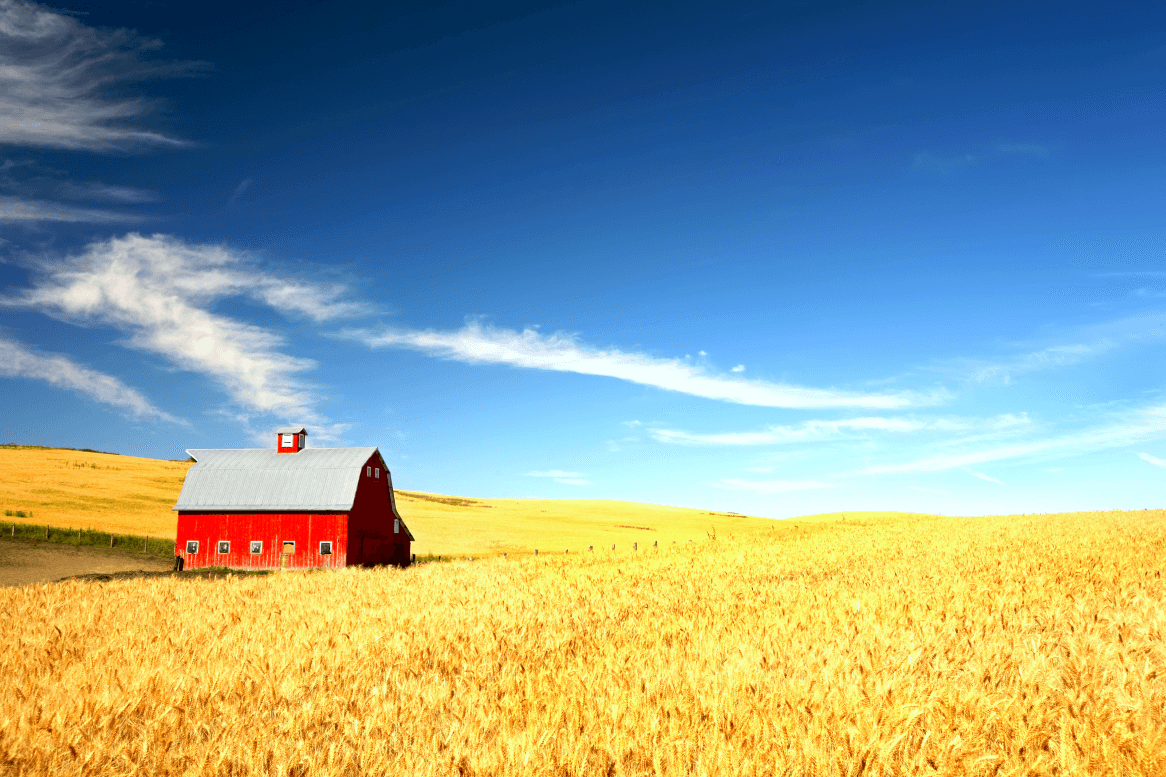Preparing for a Better Wheat Harvest
By Natalia KomeJune 27, 2019

It is critical to prepare your farmland to provide a better wheat harvest. Here is how:
Preparing for a Better Wheat Harvest
Summertime means it's time to harvest the wheat you planted in the fall. Harvesting wheat isn't a cut and dry process, there's actually a science to it. Here are a few tips, and some advice from a wheat harvest professional, to help you get the highest yield from a crop that is a main ingredient in many foods all over the world.
"I was raised as a custom harvester and operated
machinery that cut and hauled wheat from Texas to North Dakota every
year," said Shawn Terrel, president of United Country Auction Services. "My
father was a custom wheat harvester for 43 years and it was our family
business. The equipment used for harvesting is not only very large, it is very
costly to own and operate. Over the years, the equipment costs have grown
dramatically as engineering and technology have played a major role in the
development of the harvesters (combines) used in today's farming
operations."
Know Your Land
Knowing when to harvest isn't a guessing game. Now that
you've prepared your soil, fertilized, planted, watered and tended to your
wheat crop all year to watch it grow, it's important to know when to harvest.
Wheat should be monitored regularly to check its progress and that means
getting out into the field.
Checking Moisture Levels
Moisture in the kernel or berry is the primary way farmers
decide if wheat is ready to harvest. If you don't already have one, you can get
a moisture tester/reader at most farm stores. Some articles state that an ideal
wheat moisture content at harvest is between 18% to 20%, however this is not an
appropriate moisture level for (storing) wheat. Once wheat is harvested at
these higher moisture content levels, it must be artificially dried during
entry into a storage facility. Harvesting wheat for storage is generally cut
and hauled to an elevator when the moisture content reaches 13.5%. Wheat that
is harvested in this range is ready to be stored for longer periods of time.
Prepare Your Equipment
There are three primary pieces of equipment that harvest
wheat (combine w/header; grain truck; service truck). All three pieces of
equipment require maintenance however the harvester (Combine) requires a
significant amount of maintenance and daily inspection to ensure all of its
many working components are ready for a hard day's work. The climate is
typically very hot during wheat harvest, so the machines work under an extreme
amount of heat and pressure throughout the workday. Having a regimented
maintenance and inspection process will help ensure your harvesting equipment
is running in top order. The primary elements of servicing the equipment are
lubrication (grease), fuel, water and engine oil. This is a mandatory part of
the daily maintenance routine to helping ensure a productive day of harvesting.
Use the Right Storage
Typically, farmers utilize one of two primary storage
facilities to deliver their harvested crop. They either have grain bins onsite
at their farm headquarters or nearby area, or they will haul their wheat to an
area grain elevator and storage facility. Grain bins and elevators require
close monitoring of the grain moisture content to keep from spoiling the entire
contents in the grain bin. They also require the use of a pesticide since most
loads of wheat will contain various insects that can cause damage to stored
wheat. Wheat can be aeriated with perforated tubes in the bin or the use of an
aeriated floor. Many grain bins will also have a fan system used to force air
through the grain and control high levels of moisture which can spoil the
grain. It is not uncommon for grain bins used onsite at farming operations to
have the bins elevated on a stand with a cone. Companies like Hoppercone make grain handling and moving a
breeze and grain bin cones also add additional storage capacity.
Taking proper precautions and being well-prepared this harvest season should help ensure higher yields, smoother harvesting operations and better-quality wheat held in storage. Do you have more tips for a better harvest? Let us know! Share your ideas with us by following us on our Facebook, Instagram and LinkedIn.
United Country Real Estate has been a leader in farm land
sales since 1925. To learn more, visit www.UnitedCountry.com.
Sources:
https://www.adamsgrainbins.com/5-ways-improve-wheat-grain-harvest/
